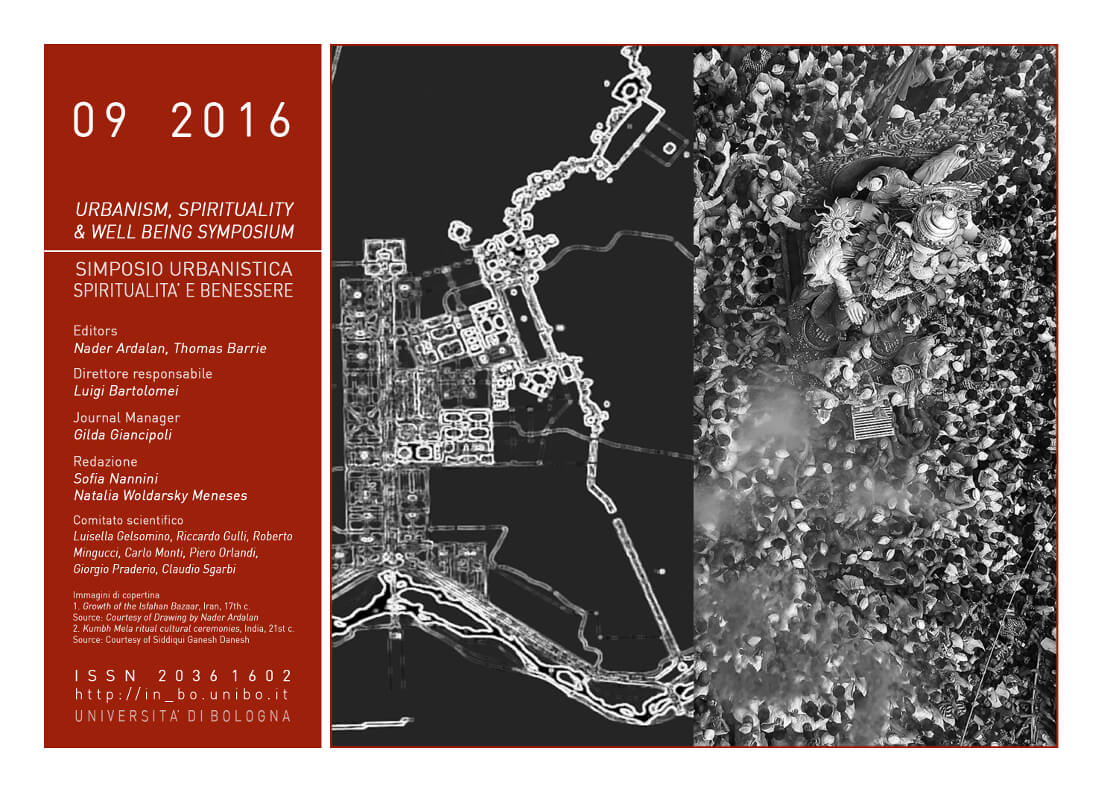Urbanism of Detachment
DOI:
https://doi.org/10.6092/issn.2036-1602/6288Keywords:
Kumbh Mela, Ephemeral Urbanism, Landscape, Temporality, TimeAbstract
In recent years, there has been an ex¬traordinary intensification of pilgrimage practices, which has translated into the need of larger and more frequently constructed urban structures for hosting massive gatherings. The case of the Kumbh Mela, a legendary Hindu festival in India, sets the standards for understanding alternative ways of building cities that are transitory and with a temporality aligned with the ephemeral nature of massive human flows. This massive cultural gathering, resulting in the biggest ephemeral mega city in the world accommodating 3 million pilgrims every 12 years, generates an extreme case that forces us to reflect deeply about the way we may think of future cities more broadly and from which we can extrapolate several lessons regarding more resilient, “open concept” of architecture, urban design and planning policy.References
Andrea Branzi, From Radical Design To Post-Environmentalism. Vera, Sordi (Eds) ARQ Ediciones Santiago
Diana Eck, India: A Sacred Geography, New York: Harmony, 2013
Hans Bakker, Ayodhya: Three Parts (Bound in One), Munshiram Manoharlal Publishers 1990
DP Dubey, Pilgrimage Studies. The Power of Sacred Places, Society of Pilgrimage Study. Allahabad 2001 page 12
Charles Waldheim, ‘On Landscape, Ecology and other Modifiers to Urbanism’, Scenario 01: Landscape Urbanism, Fall 2011
Richard Sennett, The Open City, https://www.richardsennett.com/site/senn/UploadedResources/The%20Open%20City.pdf
John Kaliski, Democracy Takes Command: New Community Planning and the Challenge to Urban Design, Harvard Design Magazine, http://www.harvarddesignmagazine.org/issues/22/
Downloads
Published
How to Cite
Issue
Section
License
Copyright (c) 2016 Rahul Mehrotra, Luis Felipe Vera
Copyrights and publishing rights of all the texts on this journal belong to the respective authors without restrictions.
This journal is licensed under a Creative Commons Attribution-NonCommercial 4.0 International License (full legal code).
See also our Open Access Policy.
Metadata
All the metadata of the published material is released in the public domain and may be used by anyone free of charge. This includes references.
Metadata — including references — may be re-used in any medium without prior permission for both not-for-profit and for-profit purposes. We kindly ask users to provide a link to the original metadata record.







